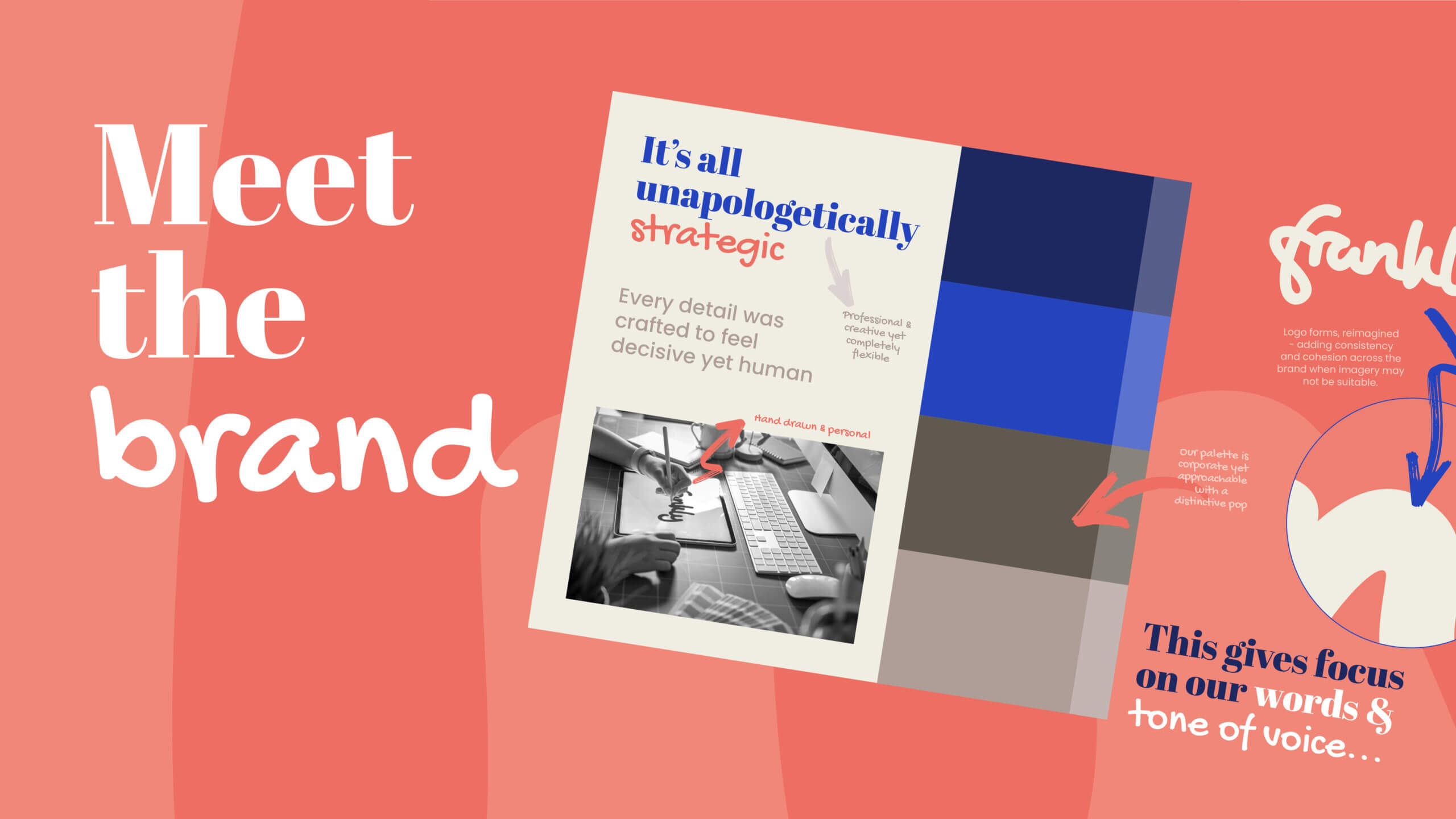Building a Strategic Foundation for the Construction Industry, Architectural Practices and Civil Engineering Firms
How Built Environment Firms Can Achieve Sustainable Growth
If you want to grow your construction company, architecture practice or engineering firm sustainably, the answer is not more marketing. It is a strategic foundation that connects your brand, business development and long-term goals into one clear direction.
In the built environment, many firms work hard but few work strategically. The ones that do outperform because they align their activity with intent.
At Frankly, we have seen it across the sector. Firms that invest in structure, positioning and communication build growth that lasts. Here’s how.
Start with Strategy, Not Tactics
The instinct when growth slows is often to do more: redesign the website, launch campaigns or post more frequently on LinkedIn. Without a plan behind it, that effort quickly becomes noise.
Effective business development for construction companies starts with the bigger questions:
- Who are we trying to reach, and why?
- What do we offer that others cannot match?
- What value does our brand bring to the market?
- Where do we want to be in five years, and what needs to change to get there?
Short-term wins rarely translate into long-term success. Firms that take the time to define their goals, services and market position are better placed to adapt to regulation changes, shifting expectations and new client needs.
Strategic planning is not optional. It is what turns reactive activity into deliberate growth.
The Four Cornerstones of Strategic Growth
In built environment marketing, strong business development usually rests on four foundations.
- Market Penetration
Deepen your presence within your current market. Strengthen relationships, raise visibility and increase share of work with existing clients. - Market Development
Expand into new regions or client types. Look for adjacent opportunities such as contractors moving into renewables or retrofit sectors. - Service Development
Evolve your offer. Add services that solve new problems for your clients, such as sustainability consultancy or digital surveying. - Diversification
Explore new markets or business models. Diversification reduces dependency on one sector and helps future-proof your business.
These four approaches, based on the Ansoff Matrix, still hold true today. The best-performing firms choose the mix of these strategies that fits their vision, resources and appetite for change.
Show What Makes You Different
In construction and engineering, reputation travels fast. That is why brand differentiation matters.
Clients do not just buy technical expertise; they buy trust and confidence. A well-positioned brand communicates both. When your message, design and delivery align, your business looks modern, credible and reliable.
Relationship management also plays a central role. A 2023 Federation of Master Builders report found that over 70% of new work in UK construction comes from returning clients or referrals. That level of repeat business does not happen by chance. It happens because firms invest in trust, consistency and clear communication.
Branding and business development go hand in hand. A strong brand attracts the right opportunities. A strong strategy turns them into long-term relationships.
Why Strategy Drives Value
Strategic thinking creates measurable value. Lisa, our founder, has spent years on boards helping firms shape marketing and growth plans that led directly to acquisitions.
“Strategy is the bedrock of business. When marketing, brand and leadership work together over several years, you do not just build awareness; you build enterprise value. In one firm we worked with, the clarity of brand and positioning helped secure a sale at fifteen times earnings. Another achieved eighteen and a half. That is the return on joined-up strategy.”
Strategy takes time, structure and senior commitment. It pays off through stronger brands, improved valuations and a more predictable pipeline.
Stats Worth Knowing
The UK construction sector contributes more than £110 billion annually to the economy.
(Source: Construction Products Association, 2024)
Fewer than 35% of construction firms have a formal business development strategy.
(Source: Barbour ABI, 2024)
80% of B2B buyers say brand reputation influences purchasing decisions.
(Source: LinkedIn B2B Institute, 2023)
Most firms still operate reactively. Those that plan strategically gain the advantage.
Final Thoughts
Building a strategic foundation is not about doing more. It is about doing what matters, and doing it consistently.
Whether you are scaling a construction firm, expanding an engineering practice or refining your architecture studio’s positioning, sustainable growth comes from clarity, discipline and a long-term view.
At Frankly, we help built environment firms make that shift from busy to strategic.
Discover how our Strategy and Fractional Leadership services help align brand, marketing and business development for stronger, steadier growth.
In short
Business development for construction companies is not about chasing leads. It is about setting direction, aligning brand and building a reputation that drives sustainable growth.



